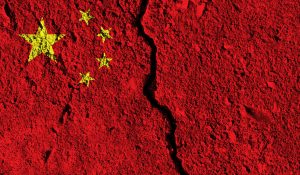China’s reaction to the recent announcement of Australia’s acquisition of nuclear-powered submarines through AUKUS was highly critical. China accused the three AUKUS members of “completely disregarding the concerns of the international communities and are walking further and further down the path of error and danger.”
Not surprisingly, China’s view of the recently announced expansion of military ties between the United States and the Philippines was also overwhelmingly negative. The news of the largest-ever joint army exercises between the U.S. and the Philippines was labeled by China as “part of U.S. efforts to encircle and contain China through its military alliance.”
In recent years, there has been a noticeable increase in the formation of multilateral groupings and informal minilaterals in the Indo-Pacific. States with existing defense-strategic partnerships are increasing cooperation and strengthening these relations. Several scholars and observers have argued that one common factor behind these developments is the rise of China and its implications for the regional architecture in the Indo-Pacific.
Yet China’s reaction to these developments is almost invariably hostile, as the statements in relation to AUKUS and Philippine-U.S. ties demonstrate. China’s wolf warrior diplomacy is well documented. Claims that the U.S. is interfering in China’s sphere of influence and regional states are joining hands to “encircle” or “contain” China are common in Chinese officials’ statements.
While Beijing may express displeasure at these security alignments, they should not come as a surprise to China. The evolving state of security arrangements in the region can be likened to the “Pottery Barn” rule. This rule was popularized by former U.S. Secretary of State Colin Powell, who used it to express his opposition to the invasion of Iraq by President George W. Bush. The rule simply states: “You break it, you own it.”
In other words, China’s assertiveness and expansionism in the region have led to a security environment where countries are forced to respond and protect their interests, ultimately leading to the formation of new or strengthened security arrangements.
Since Xi Jinping assumed office, China’s foreign policy has become increasingly assertive, as evidenced by its actions in the South China Sea. China’s island building activities in the region have been more frequent since 2012, and its claims, based on its so-called “nine-dash line,” have antagonized other Southeast Asian states, such as the Philippines and Vietnam, whose territorial claims in the sea are contested and rejected by China. While Vietnam and the Philippines have also engaged in island building in the South China Sea, the scale and extent of China’s island building and territorial claims are unparalleled, and its actions have alarmed Indo-Pacific states.
China’s maritime disputes with the Philippines have spilled over into other areas, such as fishing activities. Chinese vessels have regularly blocked Filipino fishermen from fishing in areas within the Philippines’ Exclusive Economic Zone. Chinese Coast Guard vessels have also disrupted surveying activities by Filipino authorities. More recently, China declared a unilateral ban on fishing in the South China Sea, resulting in a formal protest from Manila. Of greater significance is China’s disregard for the ruling of an international tribunal that dismissed Chinese claims in the South China Sea and ruled in favor of the Philippines.
Vietnam has also accused China of cutting off the cables of a Vietnamese surveillance ship and sending an oil rig into Vietnam’s claimed EEZ. Indonesia has complained of incursions by China in waters near the Natuna Islands. Malaysia has carried on drilling activities despite “daily harassment” by Chinese Coast Guard vessels, leading to Malaysia scrambling its fighter jets when 16 PLA Air Force jets approached Malaysian airspace without prior notification. China’s militarization of certain islands in the South China Sea further intensifies anxiety among Southeast Asian states.
Beyond the South China Sea, China has ongoing territorial disputes with other states in the region, including Japan over the Senkaku/Diaoyu Islands and India over the Himalayan border. China has also shown little restraint in using trade as a means of coercion and slapped heavy sanctions on Australian imports in response to Australia’s call for an official inquiry into the causes of the COVID-19 pandemic.
Since 2012, China’s foreign policy has taken a more assertive position, and some observers suggest that China’s rise is no longer consistent with the “peaceful rise” narrative. Former Premier Wen Jiabao coined the term to convey that China did not seek to be a hegemon as it rose economically and militarily, and that it would not threaten regional security by upsetting the status quo or ignoring the norms of the international order. However, China’s actions since 2012 contradict this narrative.
On one hand, China claims not to threaten regional security, yet it coerces its Southeast Asian neighbors through air, land, and sea military maneuvers as well as gray zone tactics. China claims to follow the norms of the international order, yet it does not abide by UNCLOS or the verdict of an international tribunal on its South China Sea claim. China espouses that it will not coerce countries in the region, yet it is comfortable in weaponizing its trade.
China’s increasingly assertive actions have upset the status quo and shattered the illusion of its peaceful rise. Countries in the region are now looking to each other for cooperation and support because of this realization. The rise in multilateral groups and minilaterals is a response to China’s brazen actions.
China cannot deflect responsibility for the increasing tension in the Indo-Pacific region and must own the consequence of breaking the image of its peaceful rise. The changing security architecture in the region and the increase in partnerships to counter China are a reaction to China’s own actions. The Pottery Barn rule applies here: China must take responsibility for this development in the region.

































